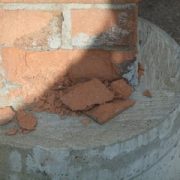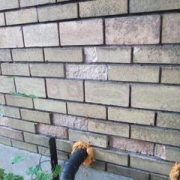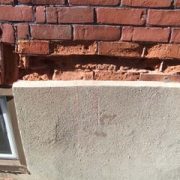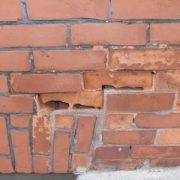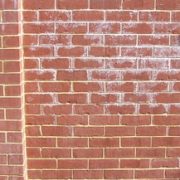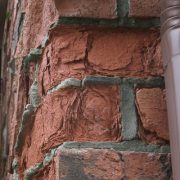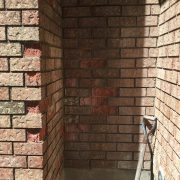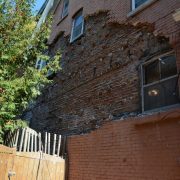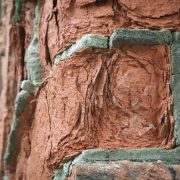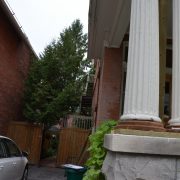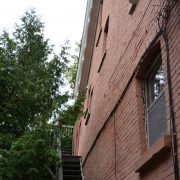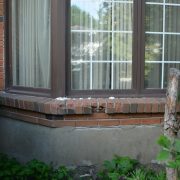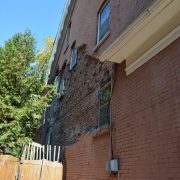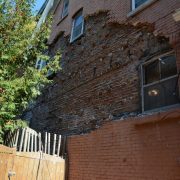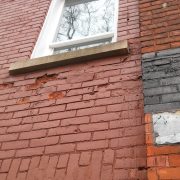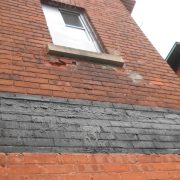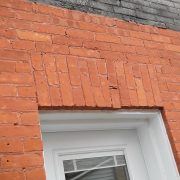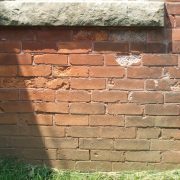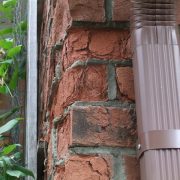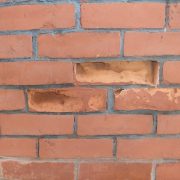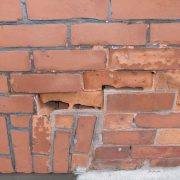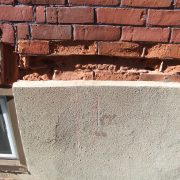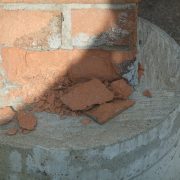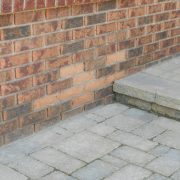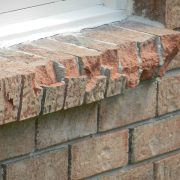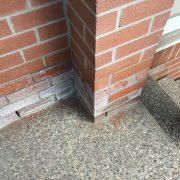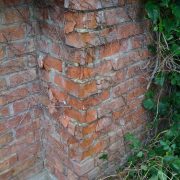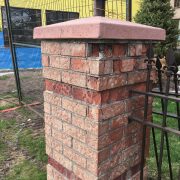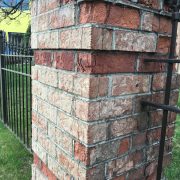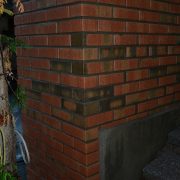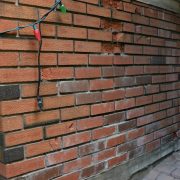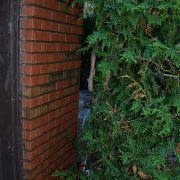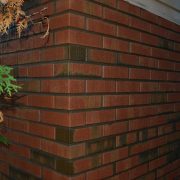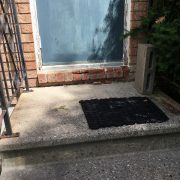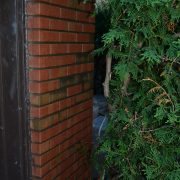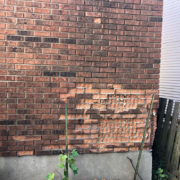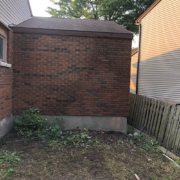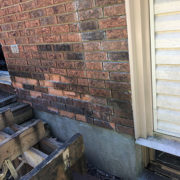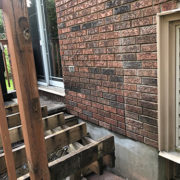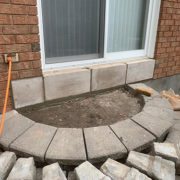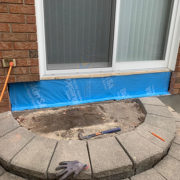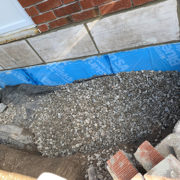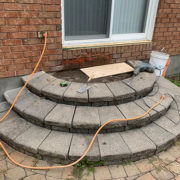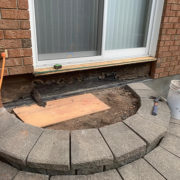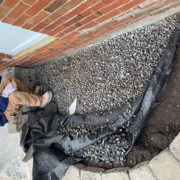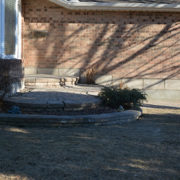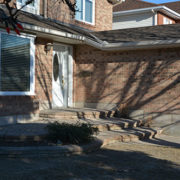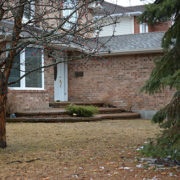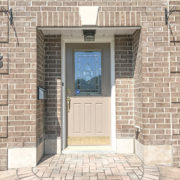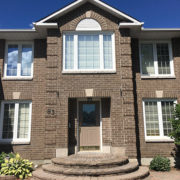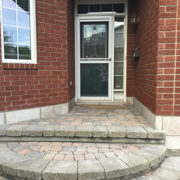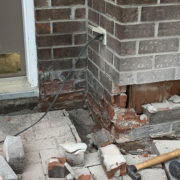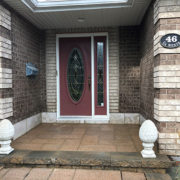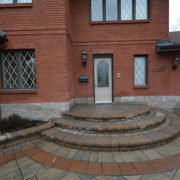Spalling Bricks & Efflorescence
Spalding Brick
Water being one of the rare elements that expands when it freezes, is the root cause of spalling bricks.
Penetration of moisture in the masonry unit is the main cause of decay and weathering. Additionally Acid rain and ecological effects of the last century, salts ,freeze/thaw cycle combined, all play a role in the delamination process of the masonry unit.
When water is absorb by the brick through capillary action, due to the exposure to the elements or condensation, the liquid now within the brick expands and contract. This is called Thermal Expansion or Volumetric Temperature Expansion.
As the temperature drops and the water freezes, and expand as much as 9% at its maximum force. This translate to a force between 25,000 and 11400 PSI . Your clay brick doesn’t have a chance.
One of the telltale sign of excess moisture is effloresce.
Effloresce is the dissolved salts that leach out to the surface of the masonry units and crystallize on the face of the masonry , producing a white bloom of crystals looking like a fluffy powder.
This efflorescence although unsightly is non consequential. The water causing the efflorescence is the destructive force and is consequential.
However there is a type of efflorescence that is destructive in nature. Crypto florescence or sub florescence leads to crumbling and delamination of the masonry unit . This type of efflorescence is hard to detect. It lies below the surface of the masonry unit. The growth of the crystals creates a pressure and that force is what brakes the brick apart.
To remedy these factors Canadian Masonry Services uses a variety of techniques.
We can replace the weathered bricks, If we can manage to move or redirect the water from the area. Sometime it’s as easy as moving a water barrel or a shed, or cutting down a bush.
At front entrance of homes Interlocking pavers are often the culprit, landscapers introduce stone dust under the pavers as a leveling agent. As it rains or melting snow weeps past the pavers and soaks the stone dust . This wet stone dust is now laying against the porous bricks that acts like a wick. Through capillary action the bricks will absorb the water, add a little freeze /thaw effect and you have the perfect recipe for spalling bricks.
In this case we replace the brick with an Adair lime stone.
Adair® Limestone Marble is a dense, dolomitic limestone, quarried from the Amabel formation in the Bruce Peninsula near Wiarton, Ontario, Canada. It is a natural stone that has been selected, Adair® Limestone Marble is an all-weathering, highly resistant material exhibiting “long life under hard use” characteristics.
Generally we will remove one foot of brick ( four rows) and replace it with a non-porous Adair limestone.
This allows the clay masonry units to be above the pavers and prevents the moisture sources from coming into direct contact with the masonry.
Due to its high density and molecular bond Adair lime stone is not inherently absorptive. This make it impervious to moisture.
These preventative measures will prolong the life of your home and investment.
The rich and aesthetically pleasing look of this natural stone and your hand made personalize creation will make a statement of elegance and will complement the center piece of your entrance way.
It is available in rockface or a honed finish ( grounded to a smooth finish )
How Does Spalled Brick Occur?
- Rain
- Snow being thrown against the house
- No eaves or eavestroughs
- Sandblasting, pressure washing or chemical cleaning of the brick
- Water pooled at or near the brick’s surface
- Damp soil against a brick wall
- Non breathable wall sealers
- Having the brick too low to the ground
Mechanical force can also spall brick, for example, the repeated effect of a pressure washer against brick can cause it to crumble. The rate at which bricks spalls is a factor of how porous the brick is, the amount of moisture the brick is exposed to and the number of freeze and thaw cycles that the brick experiences.
Why is Spalled Brick a Problem?
Spalled brick weakens the protection on the outside of your home to the elements, increasing the risk that water will get between the brick and the wall. If water or moisture gets between the outer brick surface and the wall, mold, rot, water entering your home or basement or other more serious problems can occur. Replacing your spalled bricks is critical to maintaining your home. Fixing spalled brick as it occurs is much cheaper then rebuilding a damaged wall of your home, or rebuilding an entire brick wall.
How do I know if I have spalled brick?
Warning signs of spalled brick are easy to spot. The photo on the left shows a spalled brick wall. If you have any spalled brick on the outside walls of your home, contact us today to have the spalled bricks removed and replaced. One spalled brick greatly increases the chances that the surrounding bricks will spall, as it increases the surrounding brick’s exposure to water.
Another clear sign that bricks are absorbing moisture is what is called efflorescence. Efflorescence can often be seen in the spring when the snow melts, and looks like salt marks on a brick walls. Efflorescence is actually the natural salts leaching out of the brick wall. Salt absorbs moisture, and as it absorbs moisture, it expands. The expansion of the salt makes it more noticeable on the outside of the brick. If you see white salt marks on the outside of your brick, it means that it has absorbed moisture. You should identify the reason why the brick is absorbing moisture and address the problem.
Common Areas where Spalled Brick Occurs
Spalled brick often occurs where moisture is more likely to collect around your walls. This can include;
- Near down spouts, especially when rain water collection barrels are used.
- Under window sills. Some window sills are made out of brick and should be replaced with solid stone window sills.
- Near front doors and stairs. If the grade on the front step is not correct it can cause additional moisture to collect near the brick wall.
- On the lower portions of walls. Generally walls that are very close to the ground absorb more water, and are more likely to spall.
- Any brick that is covered by dirt or soil.
- On front steps that are covered in interlock. Where the front step of a house meets the brick wall, there are supposed to be small weeping holes every third brick that allow water that allow air circulation behind the wall. Sometimes when interlock is placed on top of concrete walkways against a brick walls, the installer forgets to accommodate the weeping holes. This leads to moisture getting trapped between the brick wall and the interlock. Because all brick is porous, the brick absorbs the additional moisture and eventually spalls.

